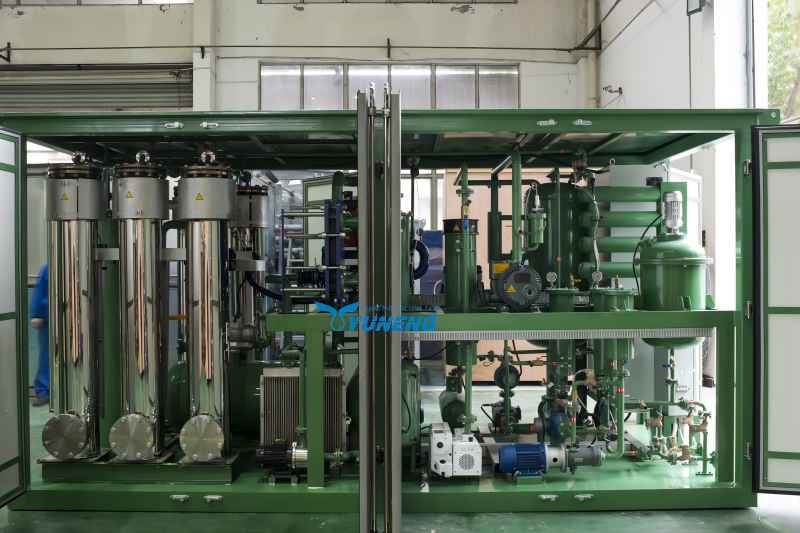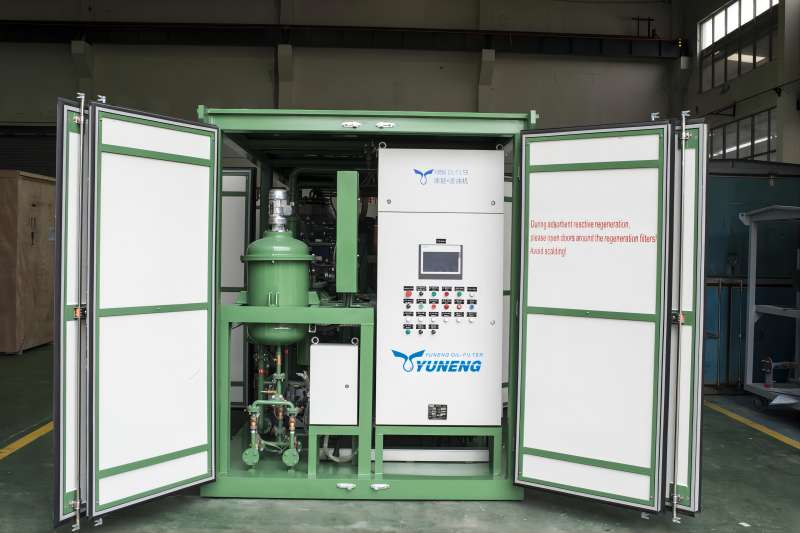Transformer Oil Regeneration: Benefits and How-to Do It
Transformer oil plays a crucial role in transformers, serving as both an insulator and a coolant. However, as time passes, transformer oil is susceptible to deterioration caused by factors like heat, moisture, and contaminants. This deterioration can result in reduced insulation effectiveness, heightened chances of malfunction, and elevated maintenance expenditures.
The deployment of transformer oil regeneration machines offers a solution for prolonging the lifespan of transformer oil and enhancing its functionality. These machines employ diverse techniques, including filtration, degassing, and deacidification, to eliminate impurities from the oil.

Benefits of Using a Transformer Oil Regeneration Machine
There are many benefits to using a transformer oil regeneration machine, including:
- Cost savings: The cost of regenerating transformer oil can vary depending on the size of the transformer, the extent of the contamination, and the type of machine used. However, it is typically much cheaper than purchasing new oil. For example, a study by the Electric Power Research Institute found that regenerating transformer oil can save up to 70% of the cost of purchasing new oil.
- Environmentally friendly: When transformer oil is disposed of, it can contaminate soil and groundwater. Regenerating transformer oil helps to reduce this environmental impact. The regeneration process removes impurities from the oil, which can then be disposed of or recycled in a safe and environmentally friendly manner.
- Increased safety: Regenerated transformer oil is less likely to break down and cause fires or explosions. This is because the regeneration process removes impurities that can cause the oil to become unstable. The impurities that are removed during regeneration can include water, acids, and dissolved gases. These impurities can cause the oil to break down and become more flammable.
- Improved performance: Regenerated transformer oil can improve the insulation performance of transformers. This is because the regeneration process removes impurities that can reduce the electrical breakdown strength of the oil. The electrical breakdown strength of an oil is its ability to withstand an electrical voltage without breaking down. The presence of impurities can reduce the electrical breakdown strength of the oil, making it more likely to break down and cause a short circuit.
- Reduced maintenance costs: Regenerating transformer oil can help to extend the life of transformers. This is because the regeneration process removes impurities that can accelerate the aging of the oil. The aging of transformer oil can be caused by heat, moisture, and contaminants. The regeneration process can remove these impurities, which can help to extend the life of the oil and the transformer.
How Does Transformer Oil Regeneration Work?
The process of transformer oil regeneration varies depending on the type of machine used. However, most machines use a combination of the following processes:
- Filtration: This process removes solid particles from the oil, such as dirt, dust, and metal shavings. The filtration process is typically the first step in transformer oil regeneration. It removes the larger particles that can damage the transformer or clog the other regeneration processes.
- Dehydration: This process removes water from the oil. Water can cause the oil to break down and become unstable. The dehydration process is typically done using a vacuum pump. The vacuum pump removes the water vapor from the oil.
- Deacidification: This process removes acids from the oil. Acids can corrode the insulation of transformers and reduce their lifespan. The deacidification process is typically done using a chemical treatment. The chemical treatment neutralizes the acids in the oil.
- Degassing: This process removes dissolved gases from the oil. Gases can reduce the electrical breakdown strength of the oil. The degassing process is typically done using a vacuum pump. The vacuum pump removes the dissolved gases from the oil.

How to Choose a Transformer Oil Regeneration Machine?
When choosing a transformer oil regeneration machine, there are a few factors to consider, such as:
- The size of the transformer: The machine must be large enough to accommodate the transformer’s oil capacity.
The size of the machine will depend on the size of the transformer. For small transformers, a portable machine may be sufficient. However, for large transformers, a larger, more powerful machine may be required.
- The type of transformer: Some machines are designed for specific types of transformers, such as oil-cooled transformers or gas-insulated transformers.
The type of machine will depend on the type of transformer. For example, a machine designed for oil-cooled transformers may not be suitable for gas-insulated transformers.
- The level of contamination: The machine must be able to remove the specific impurities that are present in the oil.
The level of contamination will affect the type of machine that is needed. For example, a machine that is designed to remove water may not be effective at removing acids.
- The budget: The cost of the machine will vary depending on its size, features, and manufacturer.
The budget will be a major factor in the decision-making process. It is important to find a machine that meets the needs of the transformer at a price that is affordable.
Conclusion
Transformer oil regeneration machines offer a number of benefits, including cost savings, environmental friendliness, increased safety, improved performance, and reduced maintenance costs. If you are responsible for the maintenance of transformers, then using a transformer oil regeneration machine is a wise investment.
